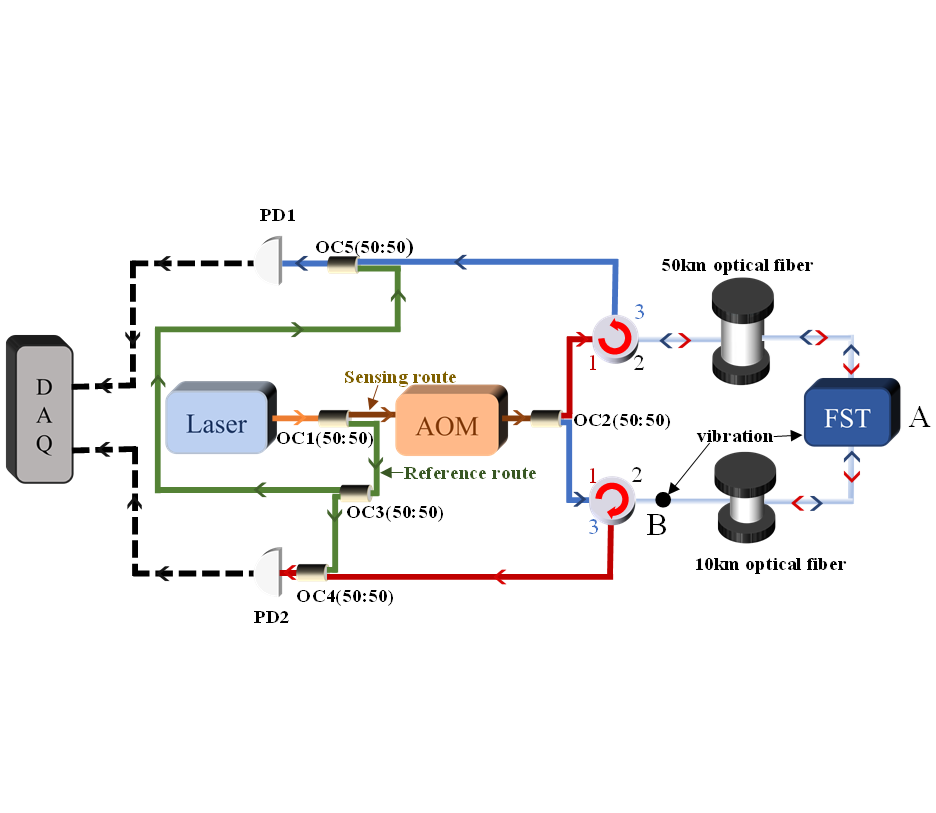Journal of Lightwave Technology:互相关与时移方差方法的对比
Z. W. Pang, G. Wang, B. Wang, and L. J. Wang, “Comparison Between Time Shifting Deviation and Cross-Correlation Methods,” J. Lightw. Technol., vol. 40, no. 9, pp. 3003-3009, 2022.
https://doi.org/10.1109/JLT.2022.3146718
Time delay estimation (TDE) is an important step to identify and locate vibration source. The TDE result can be obtained by cross-correlation method through seeking the maximum correlation peak of two signals. However, the cross-correlation method will induce random error when dealing with the nonstationary signal. We propose a novel time shifting deviation (TSDEV) method to solve this problem, which has been proved to achieve ultrahigh precision localization result in the fiber vibration monitoring system. This paper compares TSDEV method with cross-correlation in detail by simulating TDE process in different conditions, such as signals with arbitrary intercepted length, nonstationary drift and correlated noise. In addition, an experimental demonstration has been carried out on 60 km fiber to localize a wide band vibration signal. The typical localization error is 3.0 m with standard deviation of 23.0 m using TSDEV method. It stands in clear contrast to the result of cross-correlation method, whose localization error is 76.3 m and the standard deviation is 216.5 m. Compared with cross-correlation method, TSDEV has the same resistance to white noise, but has fewer boundary conditions and better suppression on linear drift or common noise, which leads to more precise TDE results.






